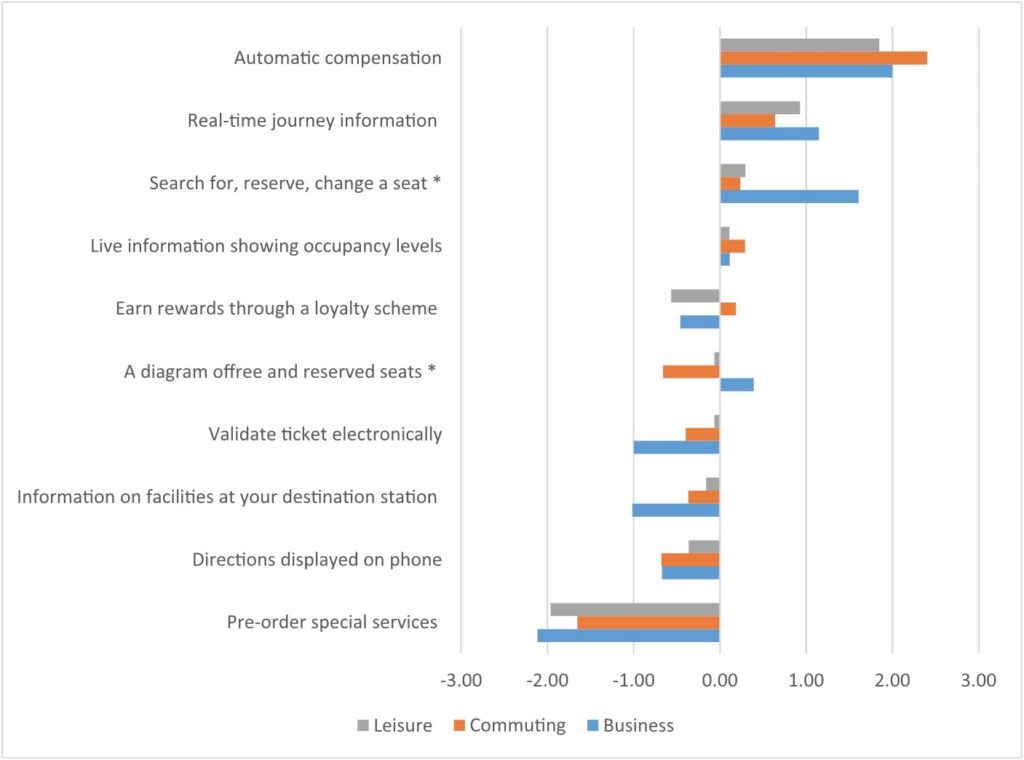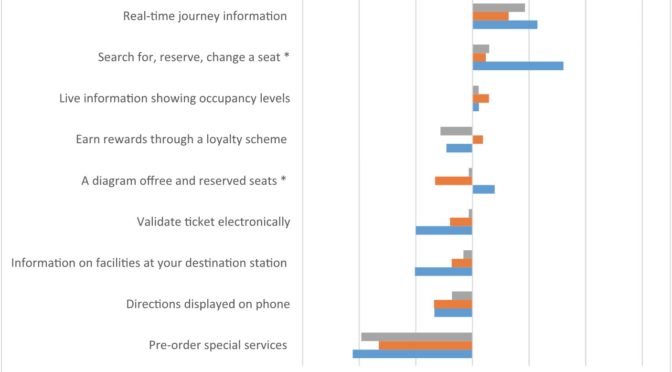We are seeing the use of alternative approaches to measure user attitudes, specifically, those that offer more robust, useful and actionable attitudinal data. One of these methods is the Best-Worst Scaling (BWS), which has risen in popularity as a choice-based measurement approach. BWS experiments collect both “best” and “worst” information from a set of statements about the product or service offering. These could include attributes, features or product benefits. As such, more information is gathered about the top ranked and bottom ranked items in a set, which allows for a more complete understanding of customer preferences.
BWS is able to handle considerably large number of attributes (usually up to 30). Despite this, fatigue is relatively low, which means that a BWS experiment is simple for the respondent but gathers rich data for the researcher.

Results will show the best and the worst scored items of a list, such as the analysis of each feature proposed to improve rail travel. The image featured above shows the preferred system feature (automatic compensation for delayed or cancelled trains) and the worse (pre-book special services). It also shows significant differences, obtained via SPSS statistics, in two items. Business travellers want to reserve a seat much more than commuters and leisure travellers. They also want to see a diagram of the available seats. Full results and analysis can be found on the journal article “What passengers really want: Assessing the value of rail innovation to improve experiences”, accessible for free on the link https://doi.org/10.1016/j.trip.2019.100014.

